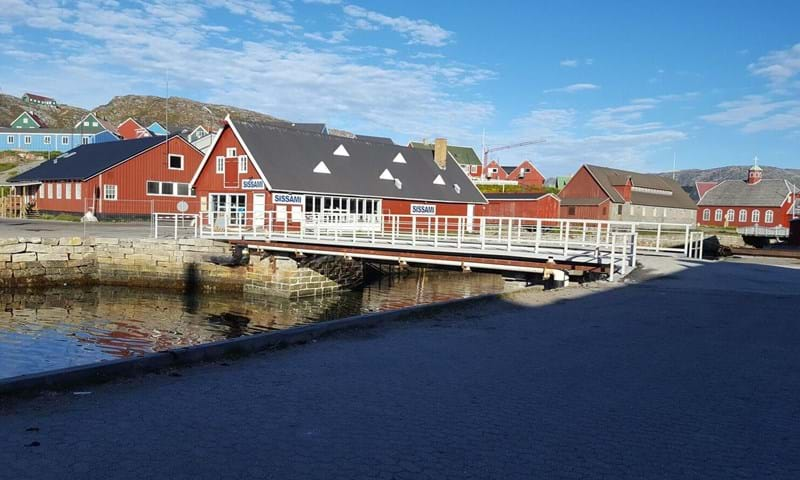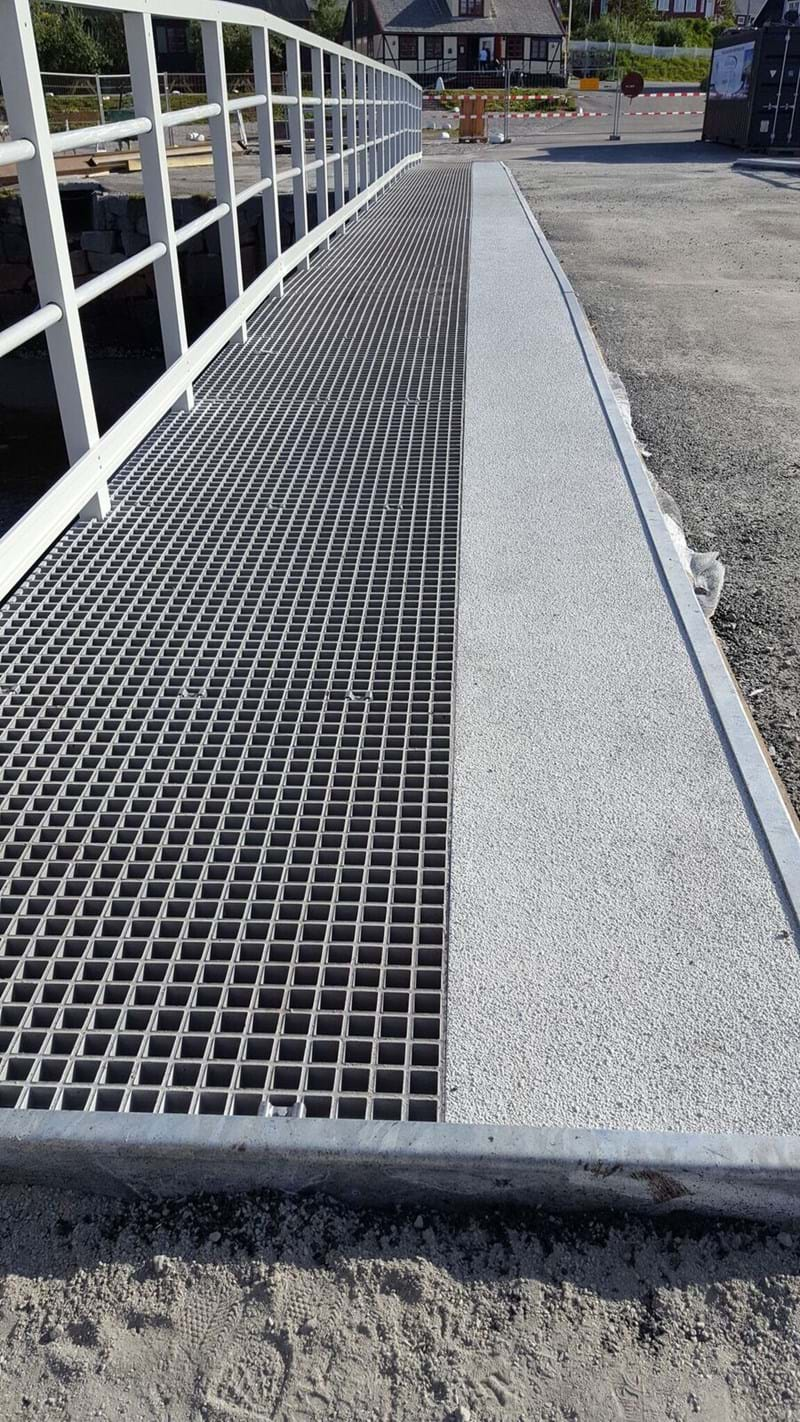

Fiberline Building Profiles A/S
Capacity: 60 tons (before 3 tons) Width: 7500 mm Length/span: 11900 mm Surface asphalt
With its low weight and minimal need for maintenance, Fiberline's GFRP composite was the natural choice of building material for the Greenland municipality of Kujalleq when faced with replacing an existing bridge. The many positive properties of GFRP (glass fibre-reinforced polymer) made the entire installation process quick, simple, and competitive.
Fiberline's GFRP composite is ideal for projects where the requirement is for speedy installation and minimal maintenance. The Greenland weather only permits repair and maintenance to be carried out during a very few months of the year, and Fiberline's "ASSET-bridge" (Advanced Structural SystEms for Tomorrow's infrastructure) was therefore the perfect solution. The low weight of the ASSET-bridge was also an important factor for the municipal authority as it offered savings on both time and costs. The GFRP required just a single container which could be transported to site by just a single lorry.
The ASSET-bridge was prefabricated by the staff of Hee Entreprise A/S at Fiberline' factory in Denmark in units large enough for the entire consignment to be shipped to Greenland in one flatrack container. The weight of the GFRP was just 12 tonnes, in sharp contrast to classic building materials such as steel and concrete, which for the same bridge solution would have weighed in at 25 and 65 tonnes. The low weight of the GFRP was also a critical factor for the municipal authority as in Greenland all building materials have to be imported. Together with the short construction time and an estimated useful life of 120 years this made Fiberline's solution the customer's preferred choice.
Hee Entreprise A/S was the project contractor and was responsible together with engineer Georg Rosenkilde for both planning, sale, and execution.
Built in 1951 with a capacity of three tonnes the original bridge had suffered foundation damage, was becoming life-expired, and was in urgent need of tender loving care. The Fiberline bridge solution weighed just 12 tonnes – and had a capacity of 60 tonnes. In conjunction with the project Fiberline's GFRP composite was subjected to testing in Greenland's extreme weather conditions. The results showed that GFRP performance, unlike the temperature, did not vary in the Arctic climate.
Erling Madsen, owner of Hee Entreprise A/S, describes the project experience as positive. "The installation time was short, only 24 days elapsing from closure of the old bridge to opening of the new one. At the same time GFRP proved the perfect material for Greenland, where there are narrow, hilly roads and transporting concrete is out of the question. And should we need to supply a bridge to a location where road access is difficult, the low weight of Fiberline's GFRP means we can also fly in the materials by helicopter. So I know there are plenty of places in Greenland that could benefit from the same solution."
The total bridge replacement time - including removal of the existing bridge, repair and reinforcement of the existing foundations, and assembly of the new bridge - was just 24 days.
Fiberline's Technical Solution Manager, Lone Døjbak, was in charge of Fiberline's part of the project and she has no doubts about the success of the project. "Through our partnership with Hee Entreprise A/S we are expecting many orders for new bridges of this type both in Greenland and Denmark. Already we are working on a new road bridge for Narsarsuaq with a capacity of 20 tonnes and a span of 60 metres. Hopefully this bridge will signal the start of many more of its type," says Lone Døjbak.







